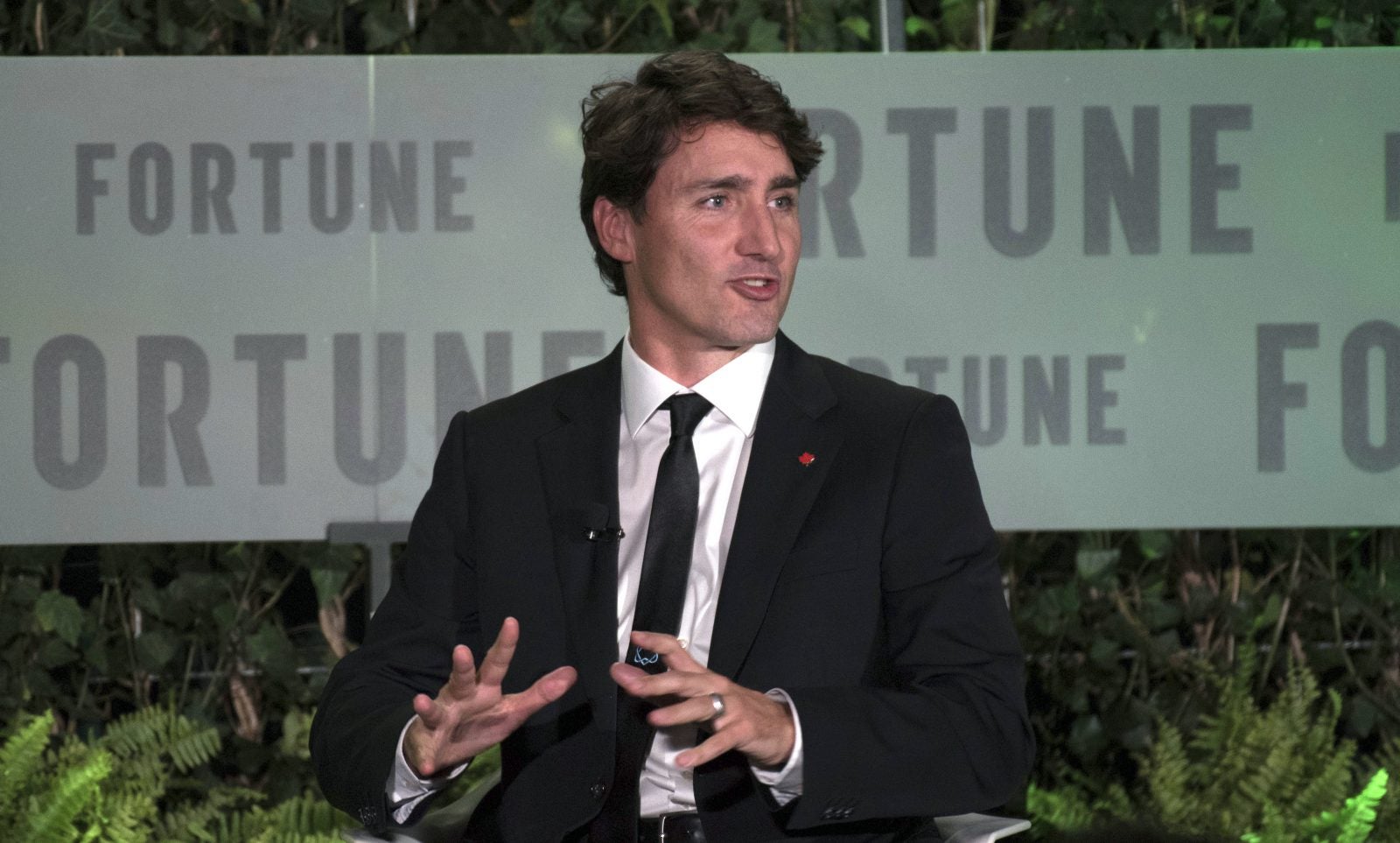Justin Trudeau’s half-female cabinet is now confronting a need for a maternity leave policy
During the year of Sociopathic Baby-Men, Justin Trudeau is a breath of fresh Canadian air.


During the year of Sociopathic Baby-Men, Justin Trudeau is a breath of fresh Canadian air.
While a recent study found that 50% of men think it’s sufficient when women account for one in 10 senior leaders at their company, Canada’s prime minister insists on gender parity in his own workplace. And he’s achieved this goal, creating his country’s first cabinet in which half the appointees are women.
However, as Trudeau explained at Fortune’s Most Powerful Women Summit on Oct. 10, once achieved, gender parity can present a whole new set of workplace hurdles. Most notably, babies.
For the first time in history, a Canadian minister is pregnant while in office. Karina Gould, the country’s minister of democratic institutions, is due to give birth in the spring.
“It’s hugely amazing,” said Trudeau. “But what do we do about maternity leave?”
With Gould’s input, Trudeau’s government is crafting a parental-leave policy. “[S]he gets to help define it, and hopefully we’ll get to show that it’s possible to be a minister and a mom, and everything, according to your own choices,” Trudeau said.
While it’s slightly shocking that, in 2017, Canada’s government has no set maternity leave for cabinet members, such policies are often tabled until they become necessary.
Take the US government, for example. In 1973, representative Yvonne Brathwaite Burke, a California Democrat, became the first US congresswoman to become pregnant while in office. With no maternity leave in place, Burke’s colleagues had to request the leave on her behalf, per congressional rules for any representative taking official leave due to personal or family illness.
Today, all US federal employees are eligible for 12 weeks of paid maternity leave. But only eight US congresswomen, all in the House, have given birth while in office.
As Trudeau reminded the audience, equality isn’t easily won. Especially in politics, leaders cannot expect powerful, qualified women to knock down their doors. It often takes patient recruiting and active encouragement.
“Studies have shown when you ask a woman if she’ll run for politics, her first question to you is, ‘Really you think I should do it?’ or, ‘Why me, why would I be good at it?’ Whereas if you ask a man, his first question is, ‘What took you so long to ask me,'” Trudeau says. “You have to work for [gender parity], and encourage, and draw it out, and I know this by direct experience.”
Now that he has it, he’s laudably listening to what the women he works with want, rather than prescribing what he thinks they will need. This kind of open-minded will likely result in a more favorable outcome for everyone. As Trudeau said himself later on at the summit, his gender-equal cabinet “has led to a better level of decision-making than we could ever have imagined.”